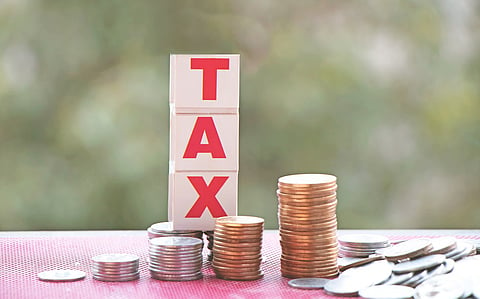‘Tax the carbon content of investments of the rich’
The world’s billionaires hold more capital than many governments and wield greater political power to influence future growth trajectories. The transition to a carbon-neutral future is a once-in-a-century opportunity to rebalance private and public investment in ways that can reduce both wealth and climate inequalities, say Lucas Chancel and Cornelia Mohren, editors of the “Climate Inequality Report 2025”. Excerpts:
Richard Mahapatra (RM): Could you elaborate on the nexus of wealth and climate inequality?
Lucas Chancel (LC): Wealth inequality between countries is closely linked to the colonial periods. Extraction of resources by colonial powers is linked to the wealth creation, and the inequality that started with it. This also marks the beginning of climate inequality. Both wealth and climate inequality are deeply intertwined.
This [inequality] led to climate space appropriation by the western countries. You [the western countries] are burning the coal to run the industries; you are also appropriating the carbon space. It is the historical responsibility [the western countries hold] for emissions. This is closely linked to the broader pattern of wealth inequality since the beginning of 19th century. And this is deepening due to the Industrial Revolution, that is, both a colonial and also an environmental extraction.
Cornelia Mohren (CM): What we see in the historical data, both between countries and within countries, [is that] inequality is very high. The transition—to a carbon neutral future and also to a wealth-equal situation—is going to be very tough, even though it needs to be equal.
RM: The climate discourse is centred on industrialised countries versus developing nations. You have focused on wealthy individuals irrespective of countries. Is it an indicator that wealth inequality is so high that just a few wealthy individuals define or decide everything, including the carbon budget?
LC: First of all, it is a combination of both—the state and the private individuals. Elected governments are important as voters can do a lot, but the wealthy people have disproportionate responsibility and also influence. The wealthy people within a country have too high emission contributions. The strategy is to not just look at the country level but also look at the few within a country who are wealthy and are big emitters. Among this group, it is not just wealth that is concentrated but also the investments that have high carbon emissions.
Just look at India: overall the per capita emission is very low; but within that you will have the top industrialists accounting or contributing the maximum through their shareholding or businesses that emit too much. It is not their private jets (lifestyle emissions, for example), but the deals they sign in jets that account for the emissions. It is their unprecedented capital that causes climate change.
RM: Does your report indicate that wealthy individuals have more capital than governments?
LC: Effectively, private capital is more than that of public. For example, the US government by some measures is poorer than Bill Gates or Elon Musk. The government has capital, but it has huge debts. When you net it out, the US government has negative or zero capital value. Elon or Bill, on the other hand, have positive net worth. So, individuals have more net wealth than governments.
Thus, the wealthy individuals have huge wealth that gives them the power to decide on investments. This also endows them with huge political powers. Countries do still have power, but the balance between these two has shifted towards the very wealthy.
RM: You argue that “well-designed climate policies” can help reduce inequality. What do these entail?
CM: The transition to a carbon-neutral future involves creation of new capital. It will be huge, in fact. So, the questions [arise]: who will own these? Who will finance? And who will benefit from this? We argue that we want to see public investment and ownership to make this transition equitable. We are very far from equal distribution of private and public wealth.
LC: Overhaul of the energy system is a once-in-a-century opportunity to shift the balance of power. We will not have this opportunity for centuries. All these assets have a long life. Because [those] who will make this and make the investments will further accumulate economic values. Yes, the billionaires can make these, but governments can also make or even in partnerships with other players like local governments.
Look at the history of the last one century when countries nationalised energy systems. The argument was to make it public owned. We have now the same situation to pick up various owners, not just private but also combinations of many, multiple layers of ownerships with checks and balances. This is needed, if we recognise wealth and power concentration.
RM: You are suggesting taxing the carbon contents of investments from the rich. Why do you think this approach will bring in more equality?
LC: We are trying to say, typically when you put a tax on fossil fuels, 100 per cent is passed to the consumers. And they don’t have alternatives but to bear this. But investors on the other hand have and can afford different options to invest, including clean technology. This doesn’t give the exact carbon tax signal to the rich. They are effectively not taxed for the carbon emissions, but the consumers are. So, the proposal to tax the carbon contents of their investments will be a signal for the producers. Besides, wealth tax on the carbon content can generate more revenue for investments in a clean future.


